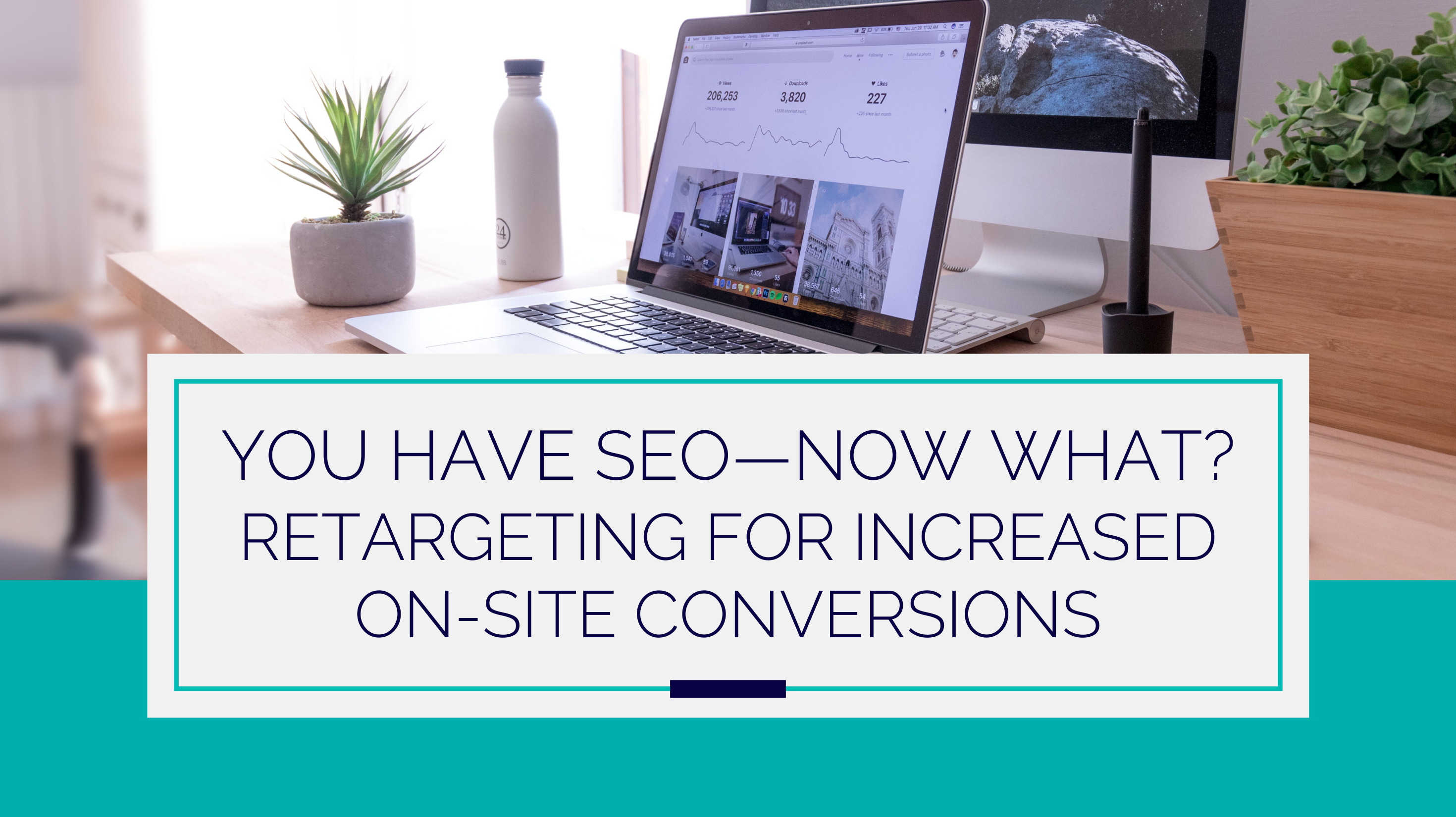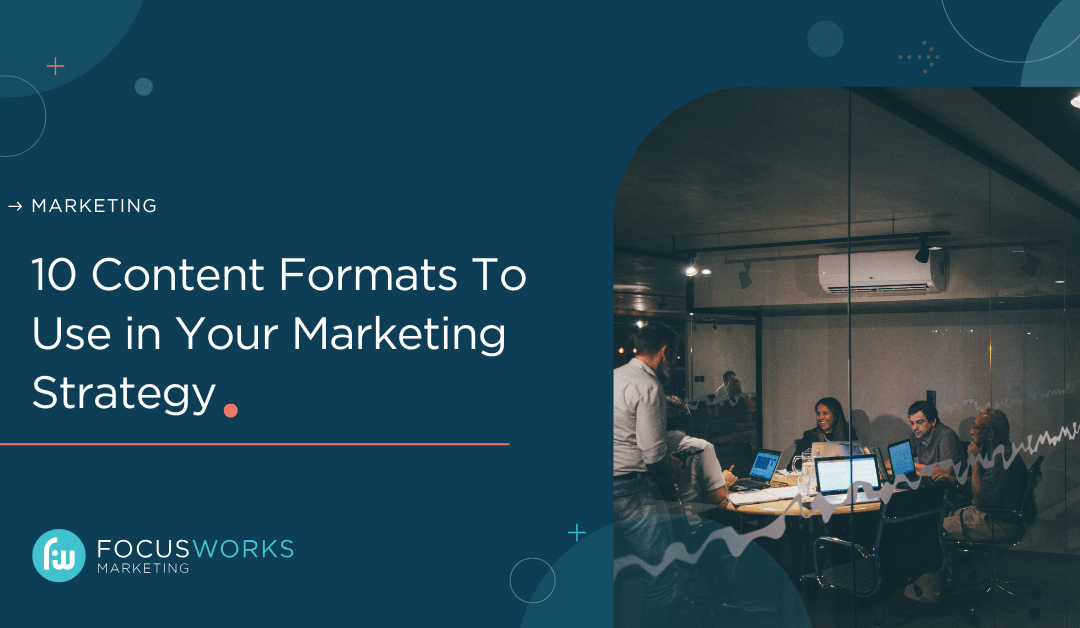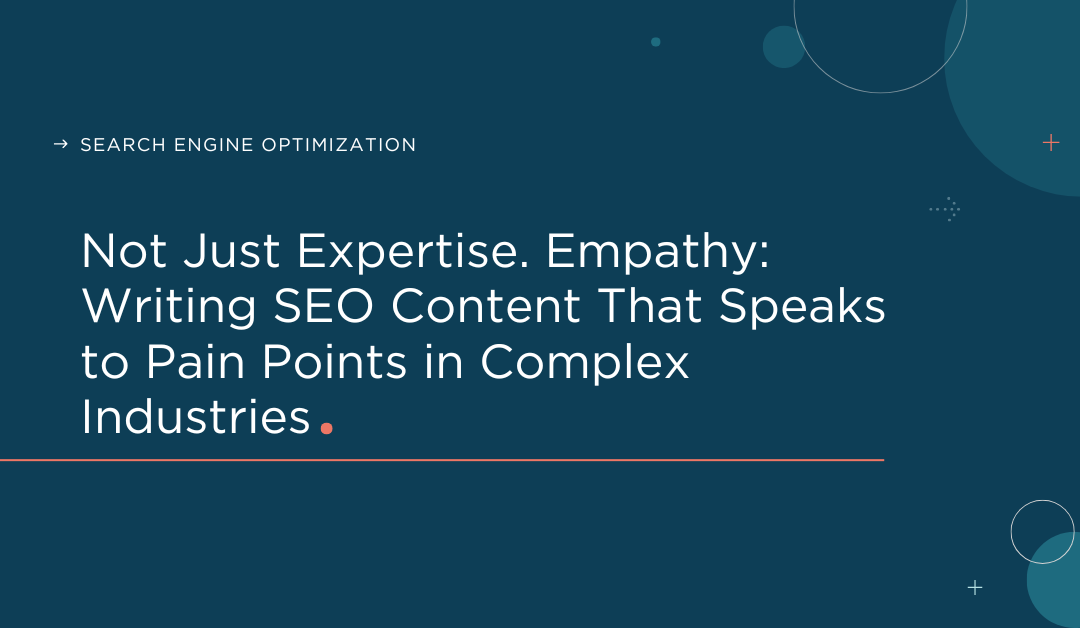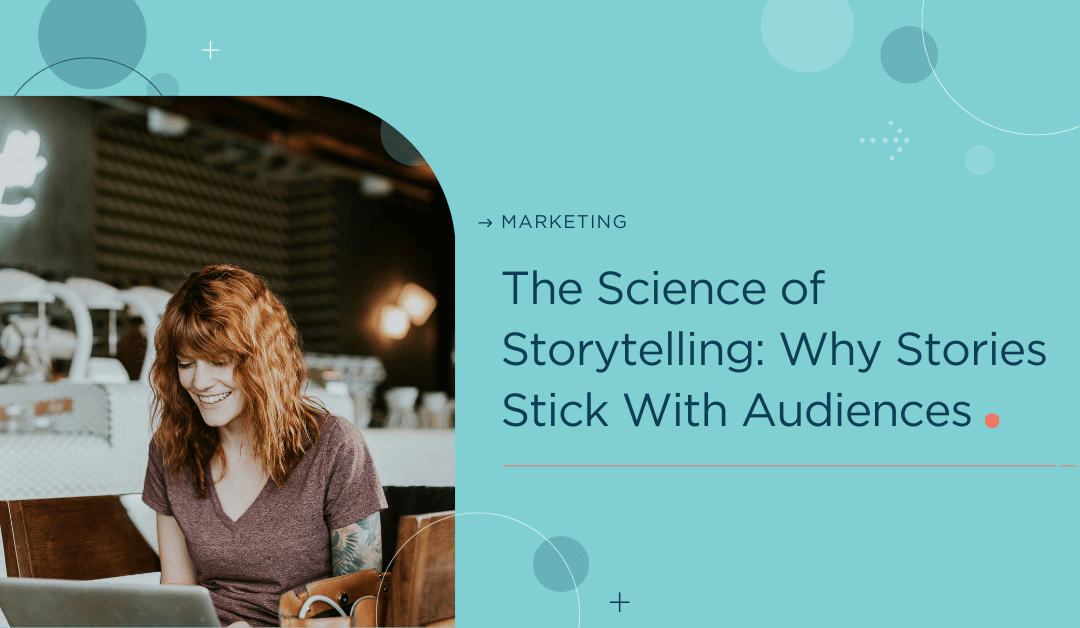So you’ve invested in SEO, or search engine optimization. You’ve done the keyword research, improved your site speed, and started producing relevant content on a consistent schedule. And you’re seeing results! Your search rankings have improved, and you’re converting more visitors to leads.
It seems like you’ve got all your bases covered—but do you?
There’s probably one key thing you’re overlooking in your strategy, and there might be some gaps that need to be filled. Specifically, it’s important to consider the users that visit your website and don’t convert. How can you convert those leads? And how can you follow up directly with those prospects in order to stay top-of-mind?
The answer? Maximizing your conversion rate optimization (also known as CRO).
Keys to increasing on-site conversions
If you build and they come, you still need to account for all those people who don’t convert on the site visit. Here’s how:
Segment audiences by page visit & retarget
One of the secrets to successful retargeting is segmenting your audiences based on the different behaviors from their website visits. Audience segmentation helps you identify the different intents of your users, and it helps you understand which of your products and services they’re drawn to.
You’re then able to target the users with relevant ad messages and information, personalizing the retargeting experiences and therefore gaining even more conversions.
Try segmenting your audiences based on keywords in your URL—this is the easiest way to filter by subject matter on the pages on your site.
Email remarketing
Most retargeting strategies focus heavily on display and social media ads, but retargeting can also be done with email marketing. By taking information you’ve gathered about the potential client or customer and sending an email with relevant content, you’re connecting with them directly—which means they’re more likely to get in touch about your business services.
Lead magnets and sign-ups
By exchanging their contact information for something of value (such as a piece of content or a coupon or discount), lead magnets collect important information about your website visitors. These lead magnets often take the form of a giveaway, an eBook or flyer, or any sort of free downloadable content that offers the user more knowledge. Ideally, this is created to give the prospect the impression that you have expertise on the subject, and it leaves them feeling that they can benefit from working with you.
You can use the collected email addresses to keep marketing to these users. Add them to your email lists or follow up with them personally.
Marketing to these leads can also help you continue to hone in on your audiences. Use the collected information to keep building your audience profiles and create lookalike audiences. For example, when running Facebook or other social media ads, you can upload your lists into the platform and create audiences based on the client information you’ve entered. Using this information to more accurately target audiences can greatly increase your conversion rates, as you’re showing ads to the right people.
Try showing these new audiences higher intent ads, or with ads designed to convert further down your sales funnel. These could take the form of video ads or ads for a webinar that your business is running. Because you have it on good authority that these people could be warm leads, showing them ads further down the funnel can be beneficial.
Having a solid CTA
Once someone is on your site, make sure you tell them what to do next with clear, compelling CTAs. Don’t bury them at the bottom of your website either. Keep them above the fold where possible and easy to spot. Need some examples? We’ve got you covered: CTAs that make people convert.
Retargeting
Retargeting (also called remarketing) is a method of digital advertising that aims to entice users back to an advertiser’s site after they’ve left. Remarketing campaigns follow your leads around the web, showing them offers from your business on various platforms including websites, Google searches, and social media.
So how does it work? When a user visits your website, they’re “cookied,” or tagged. To remarket to these visitors, a code is placed on the page that the user visits, which then triggers your ads to follow that cookied user around the web, either on a social media platform or on other independent sites across the internet.
Retargeting works to convert your lowest-hanging fruit by showing ads to consumers that have demonstrated intent to buy. The biggest benefit of retargeting is that since retargeting works by showing ads to customers who are already interested, you don’t waste your ad spend on uninterested audiences.
It’s like magic: how retargeting improves SEO
It’s simple math: higher search rankings, more website visitors, more conversions. The magic of the retargeting-SEO marriage is the symbiotic nature of how the two work to improve each other. Retargeting increases repeat website traffic. When warm leads visit the site multiple times, the conversion rate from the website is sure to increase. Additionally, since repeat traffic gained from the retargeting ads has a higher value than increased traffic by itself, this can not only increase conversions but also further increase search rankings.
Retargeting for SEO purposes also works to control your ad spend—since you’re only showing your ads to warm leads, you know your audience is targeted for success. In fact, running retargeting ads can be an incredibly cost-effective ad strategy, as campaigns only spend when there’s enough site traffic to trigger the remarketing ad. Retargeting also works to skyrocket your click-through and view-through users, bringing the most people back to a website.
Best practices for retargeting
Avoid retargeting converted website visitors
We have good news! You don’t need to retarget to website visitors you’ve already converted.
Don’t waste your ad spend or marketing dollars showing ads to customers that have already converted. Be sure to exclude these users from your audiences when setting up ads.
Use calls to action
The best-performing retargeting copy has a clear, yet spiffy call-to-action and promotes an offer.
Make sure your users are guided through the sales process and make sure you’re giving these users plenty of opportunity to return to your site and complete a conversion. After all, that’s the whole point! Don’t miss a conversion opportunity because of a weak call to action.
Keep an eye on retargeting timelines and frequency caps
Be mindful of your retargeting ads and timelines. Some purchases take longer to close than others—adapt your campaigns to these audiences accordingly. You can customize the time in between the first website visit and the ads that are shown to users or the emails that are sent.
Similarly, be mindful of how many times an ad or email is shown to a lead. Don’t waste your ad spend showing the same ad too many times to someone who isn’t interested, and don’t overwhelm a lead by sending them too many of the same email.
Keep the frequency to under twenty ads per user per month to avoid overexposure and fatigue.
Getting more website visitors to convert
Getting your site visitors to convert can be challenging—but once you understand how they work (and how they can keep building your SEO and boosting sales), you definitely won’t want to miss this opportunity ever again.
And don’t forget about the power of retargeting. Retargeting can catch the website visitors that happened upon your page in their research. It can also:
- Help these prospects remember your name and brand
- Ease leads that aren’t quite ready to buy through your sales funnel by continuing to offer them resources and information
- Give you insight into which of your practice areas are missing the most conversions on your site alone—and help you solve these problems
Conversion rate optimization does feel a bit like magic when it works correctly—but no! Rather, it’s a highly technical ad strategy with an excellent pay-off.
Contact us (the magicians!) to learn more about how we can help you retarget your site, increase your conversion rate, and boost your search rankings.



